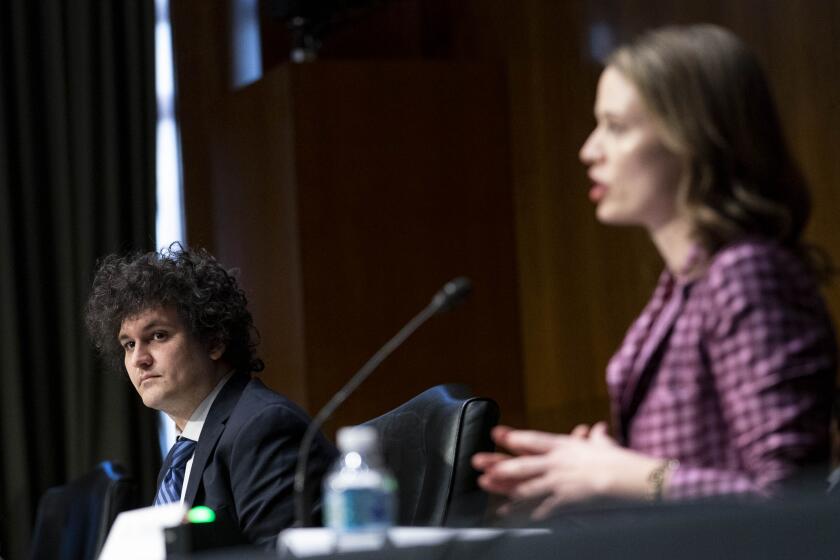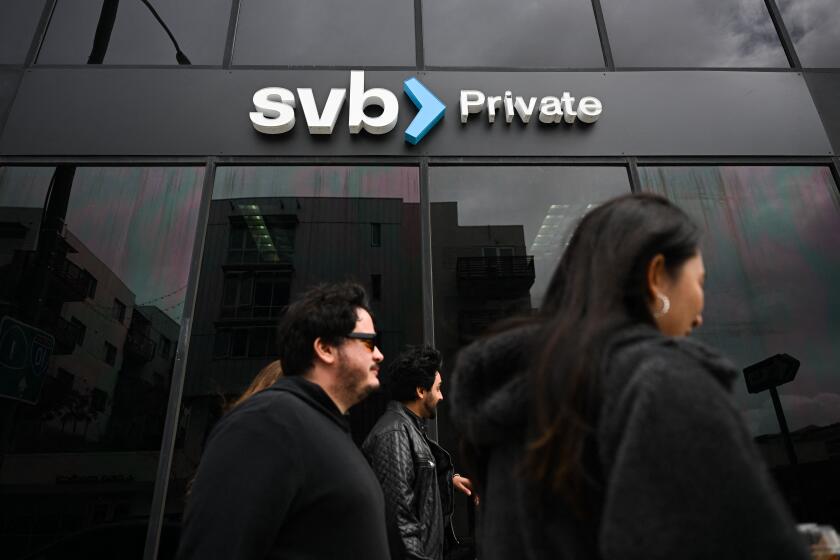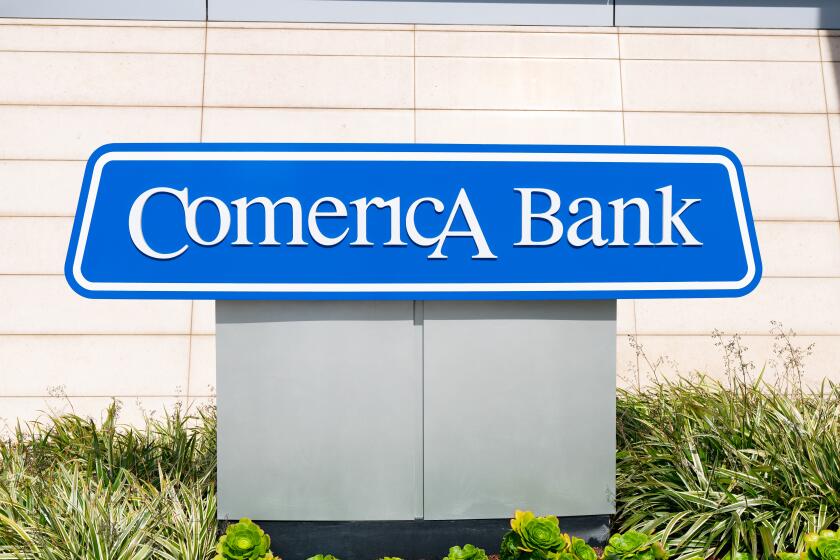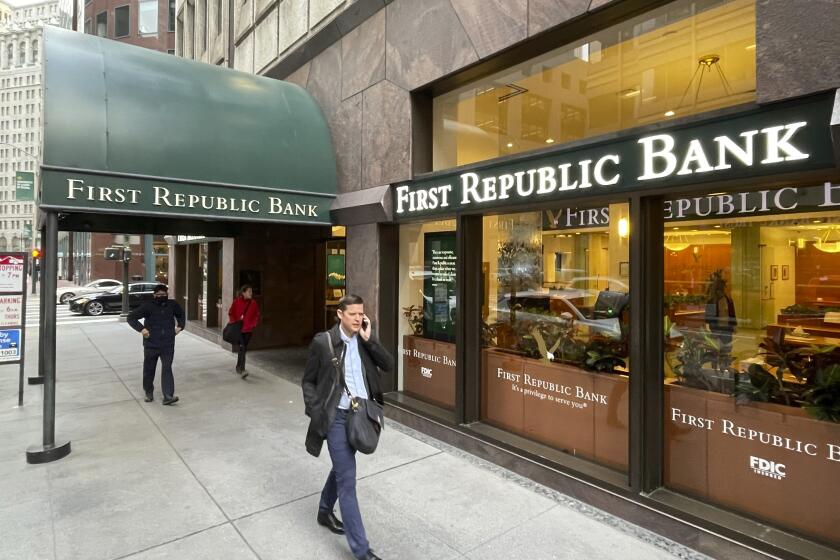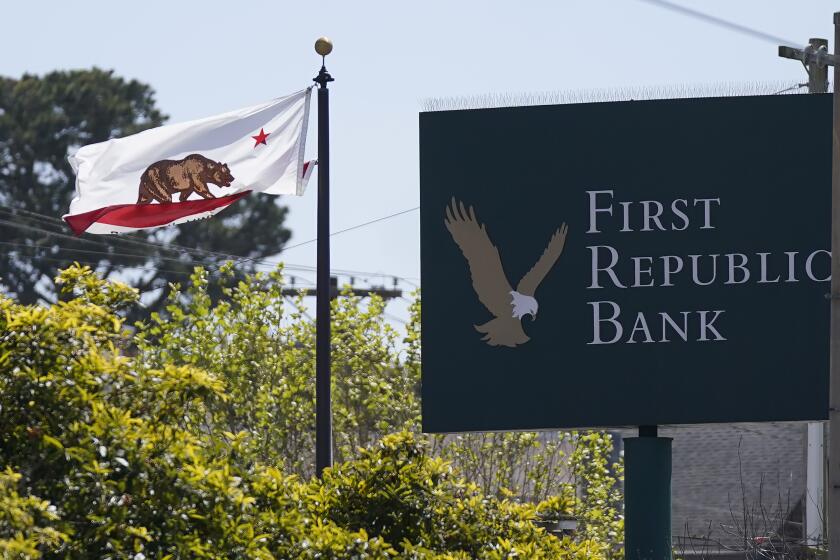Column: The Silicon Valley Bank collapse is Silicon Valley’s problem, not yours
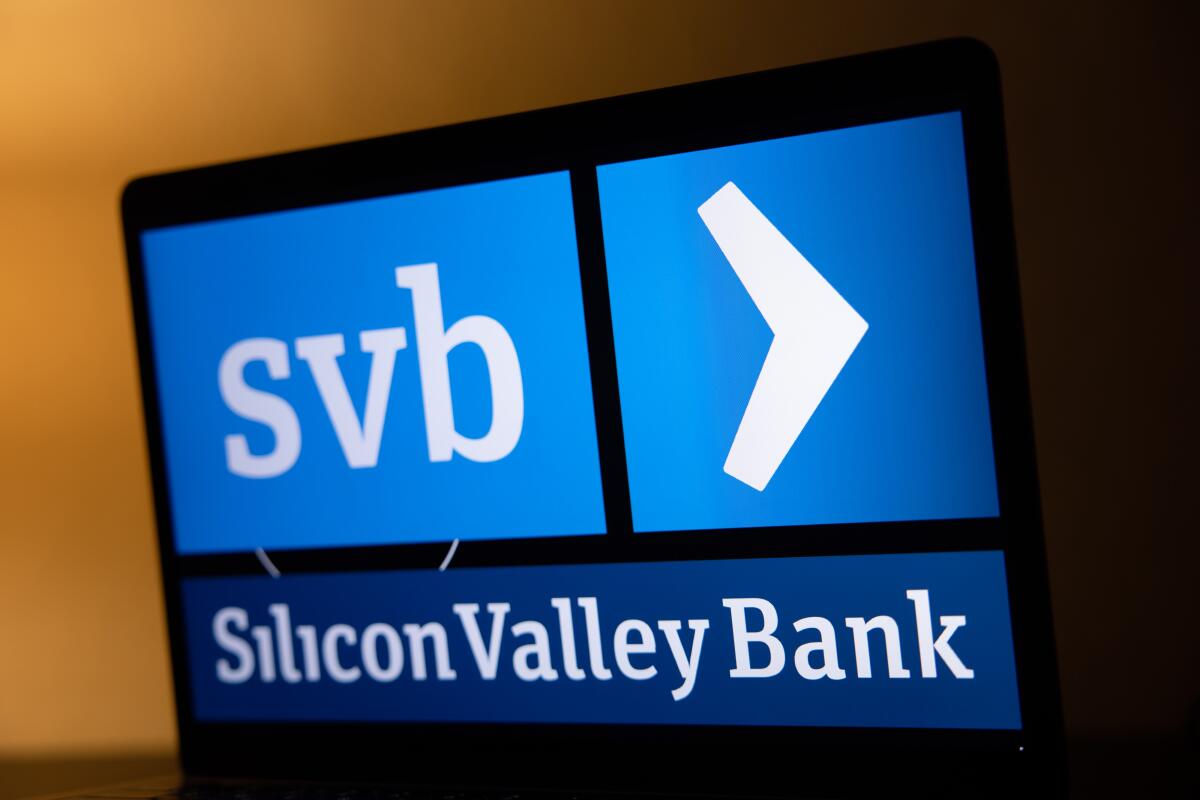
All banking crises throughout history have shared a common element: Short-term depositors try to withdraw their money from institutions locked into long-term assets.
When all the depositors try to get out at the same time, the result is an old-fashioned run on the bank. The bank either can dredge up the money to pay them, in which case the crisis passes, or it can’t, in which case it fails.
These crises tend to take on the coloration of their contemporary landscapes. So say hello to Silicon Valley Bank.
The wise man saith, ‘Put all your eggs in the one basket and — WATCH THAT BASKET.’
— Mark Twain, “Pudd’nhead Wilson”
This Santa Clara-based lender to Silicon Valley startups was closed Friday by the California Department of Financial Protection and Innovation, which turned it over to the Federal Deposit Insurance Corp. (FDIC) as receiver.
The FDIC says all insured depositors — that is, those with balances at the bank up to $250,000 — will have full access to their insured deposits no later than Monday.
Get the latest from Michael Hiltzik
Commentary on economics and more from a Pulitzer Prize winner.
You may occasionally receive promotional content from the Los Angeles Times.
Uninsured depositors will get an “advance dividend” within the next week, and a chit for their uninsured funds. The FDIC says they may ultimately receive more of their money back, but didn’t say how much or when. The agency also advised borrowers from the bank to keep making required payments on their loans.
The bank had reported in its latest annual report that 87.5% of its $173.1 billion in U.S. deposits were uninsured as of the end of 2022 — a signal of its rapid growth in the hypercharged Silicon Valley economy of recent years. Including foreign deposits, which aren’t insured by the federal government, the total uninsured figure was 95.5%.
The bank’s collapse has inspired a predictable round of hand-wringing in the financial commentariat. At one point Friday, soon after the announcement from the California regulators and FDIC, a blurb at CNBC.com tied the bank collapse to Friday’s Dow Jones industrial average loss, the Dow’s fourth down day in a row.
Another headline asserted that “Silicon Valley Bank’s crisis is rattling America’s biggest banks.”
But that’s implausible, to say the least. Almost certainly, the stock market’s decline Friday was due to the jobs report early in the morning, which showed more employment growth than was expected, consequently raising the prospects for more hawkish interest rate increases from the Federal Reserve.
The Wall Street Journal says America ‘soaks the affluent.’ Try to hold back your tears.
(Days 1, 2 and 3 of the stock market’s swoon followed testimony Tuesday from Fed Chair Jerome H. Powell indicating that he thought more rate increases were in the offing to quell inflation.)
As for the biggest banks, if they’re “rattled” it’s at a pretty low volume. As I write, shares of JPMorgan Chase are up 2.5%, Wells Fargo is up 1.34%, and Bank of America and Citigroup are basically flat in midday trading on the New York Stock Exchange.
What happened at Silicon Valley Bank, then?
Based on the information that has been made public, the bank unwisely put its eggs in one basket by taking deposits from an insular group of depositors: venture-funded startups. Some reports assert that the bank did business with nearly half of all venture-backed tech and healthcare companies in the U.S. The bank boasted of its role as “the financial partner of the innovation economy.”
It appears that the bank didn’t follow Mark Twain’s observation, “The wise man saith, ‘Put all your eggs in the one basket and — WATCH THAT BASKET.’”
The bank wasn’t watching its basket. (Nor were depositors who placed personal or corporate funds well in excess of the FDIC coverage limit in accounts at the bank.)
The bank used its depositors’ funds to buy long-dated Treasury securities and long-dated mortgage-backed securities. Not only were those funds repayable on demand, however, the depositor base was homogeneous — and Silicon Valley entrepreneurs and investors tend to move in lockstep. Bloomberg commentator Matt Levine properly calls this “boring maturity mismatches and a lack of deposit diversification.”
Investing in Treasurys with distant maturity dates — anywhere from a year to 30 years out — is perfectly safe, since the U.S. has never defaulted. When the bonds mature, you can be 100% certain that you will receive your principal, plus the nominal interest.
In the interim, however, the value of those securities, and of mortgage-backed paper, falls as interest rates rise (and rises as interest rates fall). If you have to sell too early, you can take a bath. That’s the fundamental Silicon Valley Bank story.
The vast majority of the bank’s depositors were startups born in the near-zero-interest-rate environment of the last decade or so. That’s the period in which the bank bought bonds.
Government agencies are moving to crush crypto as a hive of ‘fraud and scams.’ Congress should stay out of their way, and investors should take note.
The bank seemed destined for almost unlimited growth — as its assets soared to more than $200 billion it ranked as the 16th-largest bank in the country, albeit one almost unknown outside Silicon Valley. Its market capitalization reached $44 billion in October 2021.
At its last quoted price Thursday on Nasdaq its market value was less than $6.3 billion, and by Friday was effectively zero.
But in terms of the banking sector as a whole, it was still small potatoes. JPMorgan’s assets at the close of 2022 were about $3.7 trillion, and its market capitalization is $388 billion.
Starting in early 2020, the Fed put interest rates on an upward trajectory, raising rates by 4.50 percentage points in 2022 alone. This rattled the bank’s depositors, who started withdrawing cash. Their interest-related expenses were rising and their options for raising new rounds of funding were shrinking, as the venture firms that had been keeping them afloat slowed down their investing.
On Thursday, as the bank announced that it was seeking new capital, venture capitalists such as Peter Thiel advised their portfolio companies to pull their money out, intensifying the rush for the exits.
According to a filing by California officials, depositors initiated an astounding $42 billion in withdrawals on Thursday. By the end of the day, the bank’s cash balance was nearly $1 billion in the hole.
Silicon Valley Bank took a loss of about $1.8 billion on a sale of $21 billion of long-dated securities completed on Wednesday, the bank said. It also owned about $91 billion in securities it was planning to hold to maturity.
On Wednesday, the bank said it was seeking $2.25 billion in new capital through a stock offering. The offering reportedly failed, prompting the government-ordered shutdown.
The bottom line is that the bank’s story is an old one. Only the glitzy trappings are new. Is this a harbinger of a broader slowdown in the economy? Probably only if you think the “innovation economy” is the whole economy, which was always questionable and more untrue today than ever.
More to Read
Get the latest from Michael Hiltzik
Commentary on economics and more from a Pulitzer Prize winner.
You may occasionally receive promotional content from the Los Angeles Times.

